Restoring a painting is a tricky procedure. The Georgii Collection (TGC) recommends to leave any restoring process of older paintings (19th century or older) with experts. The danger of destroying the painting underneath the varnish cannot be overstated. Paintings with visible craquelure (the fine pattern of dense "cracking" formed on the surface of materials as part of the process of ageing) are especially vulnerable to irreversible damage. It takes years of experience to properly identify the proper procedure, chemicals and safety precautions (some colors used in the distant past were highly toxic!) that are required to successfully clean and restore a painting to its original glory.
In recent years any good museum restoration or inpainting is completed in a fully reversible manner. Over the centuries many paintings of old masters have gone through changes in terms of color vibrance or brightness - mainly owed to the fact that so many restoring projects have taken place. Today a restoration is carefully planned and it can take months or years to fully understand the artist's hand.
Every painting is, of course, different. Workmanship and quality varies tremendously between artists and even the same artist sometimes faced challenges in times of war when many simple tools such as a proper canvas or colors weren't available.
Here are video examples of successful restorations by professionals:
TGC Workshop: Cleaning and Restoring Art and Frames
The TGC focuses primarily on restoring damage to paintings due to improper storage or just plain abuse by previous owners. Examples include a Max Ludwig painting that had to be completely relined as the European size canvas was forced into a smaller U.S. standard size frame. In hair-raising manner during the course of this action the painting was simply chopped off on top. TGC was able to reline the canvas and move the painting into a larger frame - now including all details the artist originally intended to display. Afterwards a thorough cleaning took place and years of neglect was transformed into a presentable masterpiece by the artist.
Another example is shown here where a cleaning brought out the colors in an Erna Scharff painting back to almost original brightness. As an additional step the original frame was completely restored with 18k gold paint in order to complement the painting as it was originally intended:
Monterey Museum of Art restoration project
Removing Multiple layers of Yellowed Varnish
Restoration of a Rothko at the Tate London
Dramatic Result for Classic Painting's Restoration
Cleaning a Painting - Time Lapse
Fine Art Restoration workshop in Italy
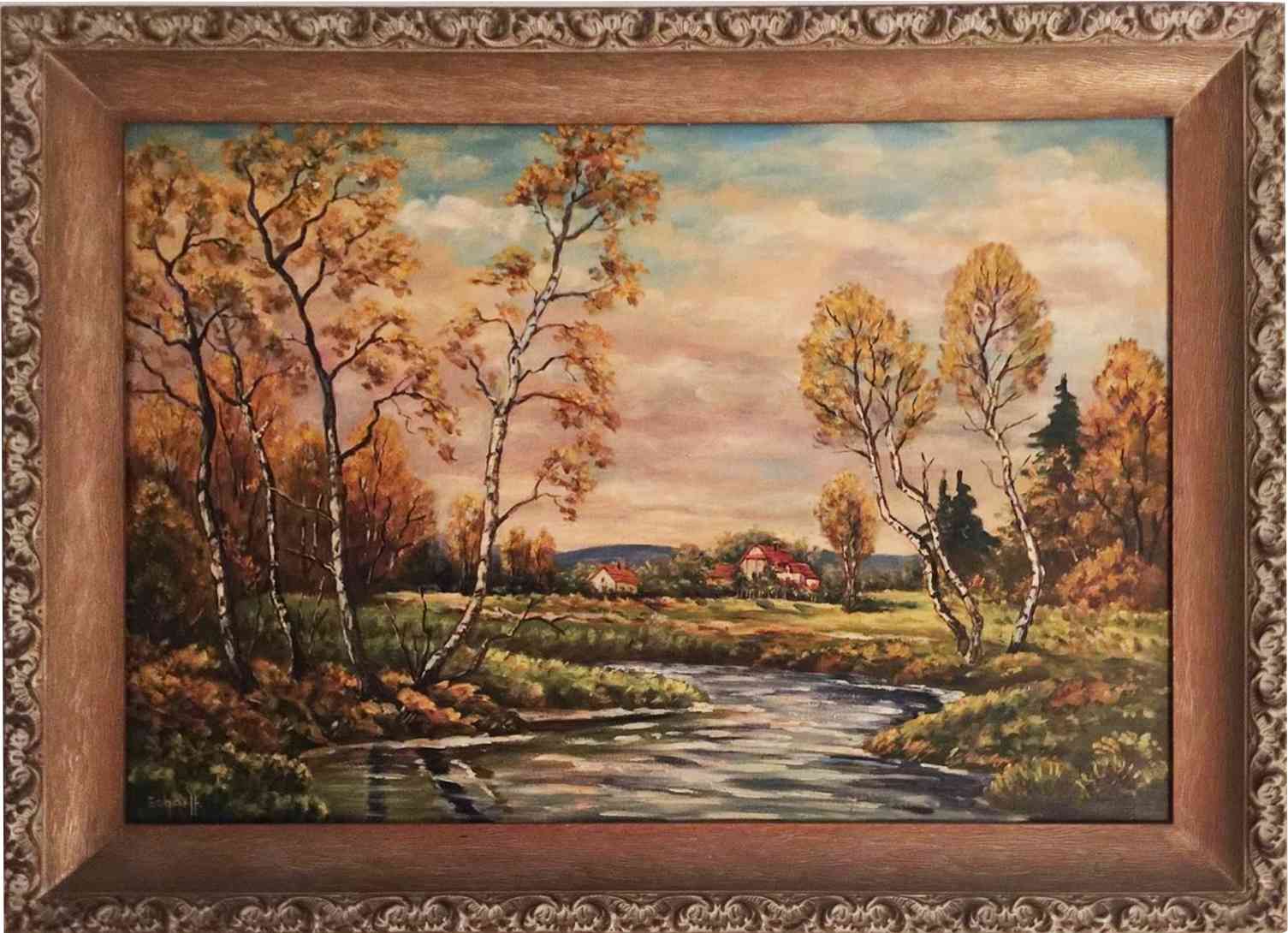
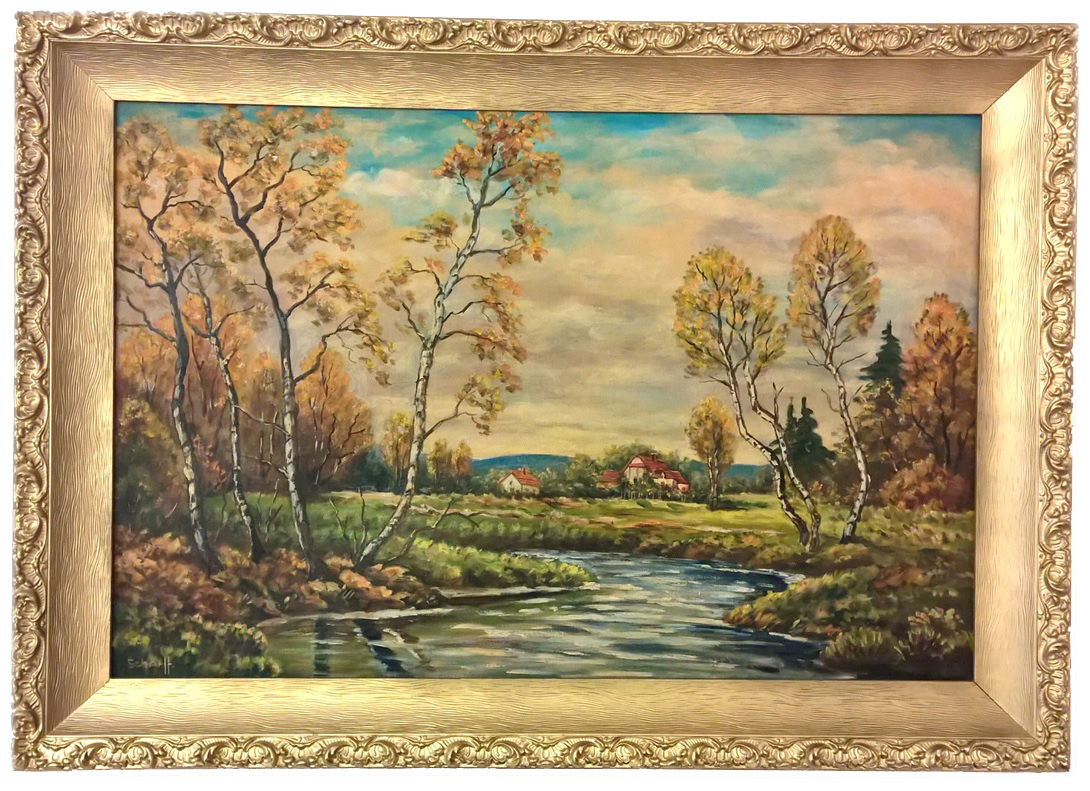
before
after
Often a frame doesn't fit the painting. TGC tries to reframe the painting into a proper period frame. The restoration of the Baumgartner painting led to a complete new frame as seen in this Before/After section. Due to improper storage the 60 year old frame's cheaply applied gesso simply fell apart rendering it useless for further use:
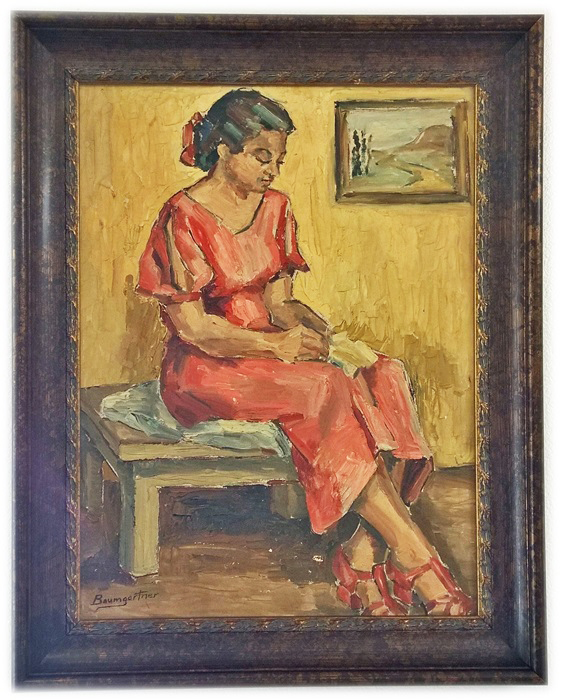
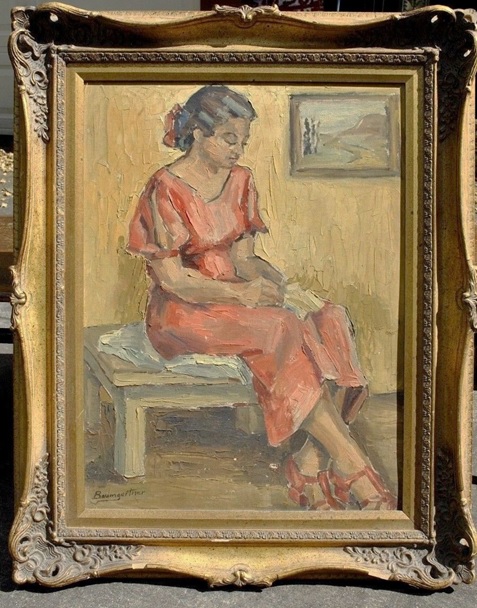
before
after


before
after
TGC Workshop: Finding the proper frame

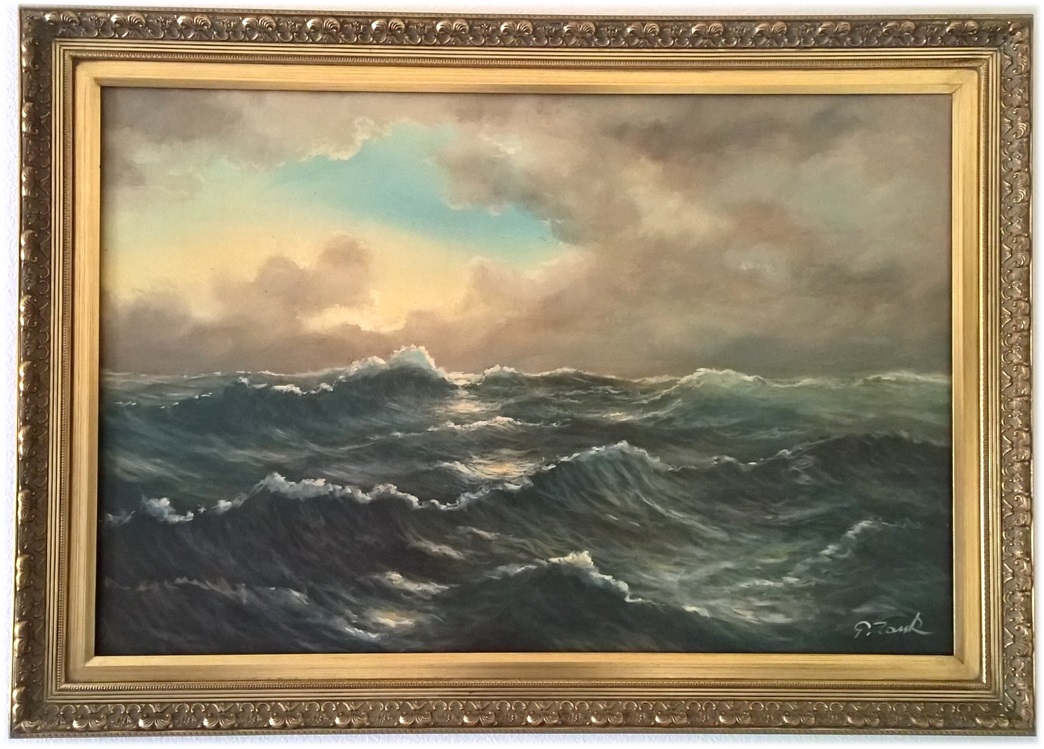
TGC changed the frame around this Gerhard Zank seascape in August 2015:
before
after
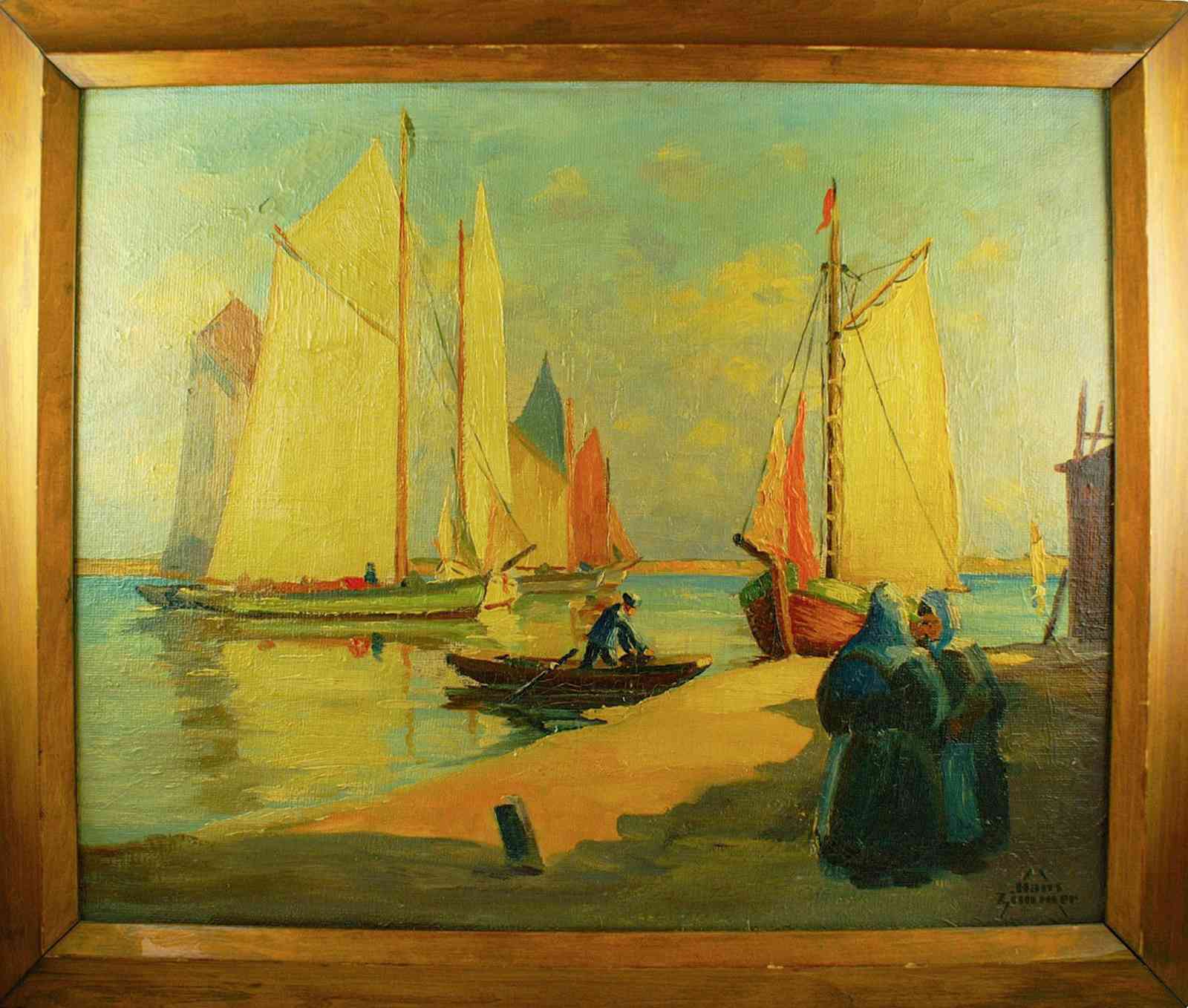

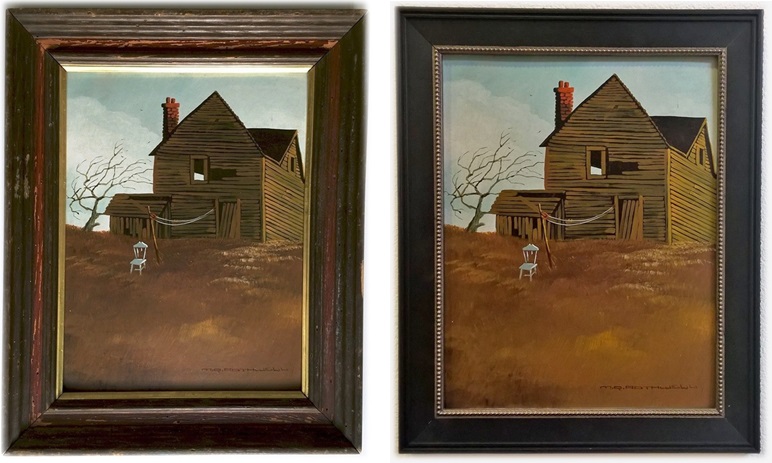
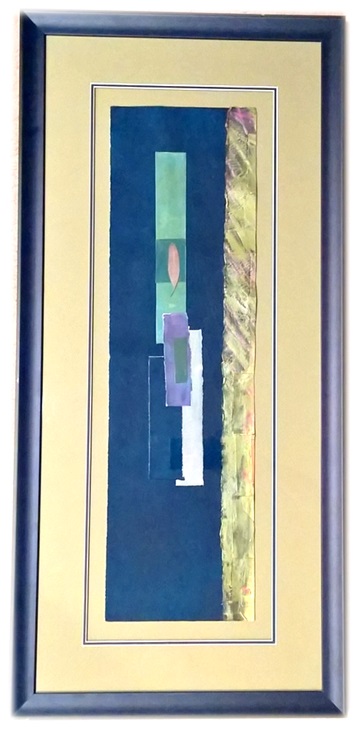
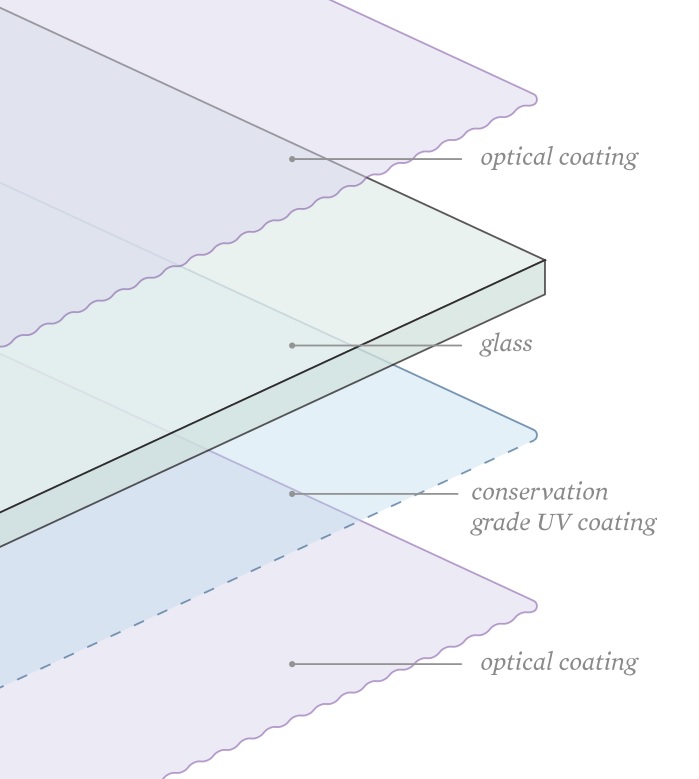
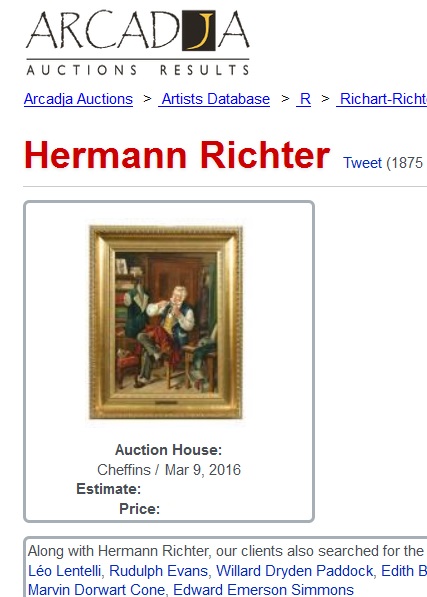


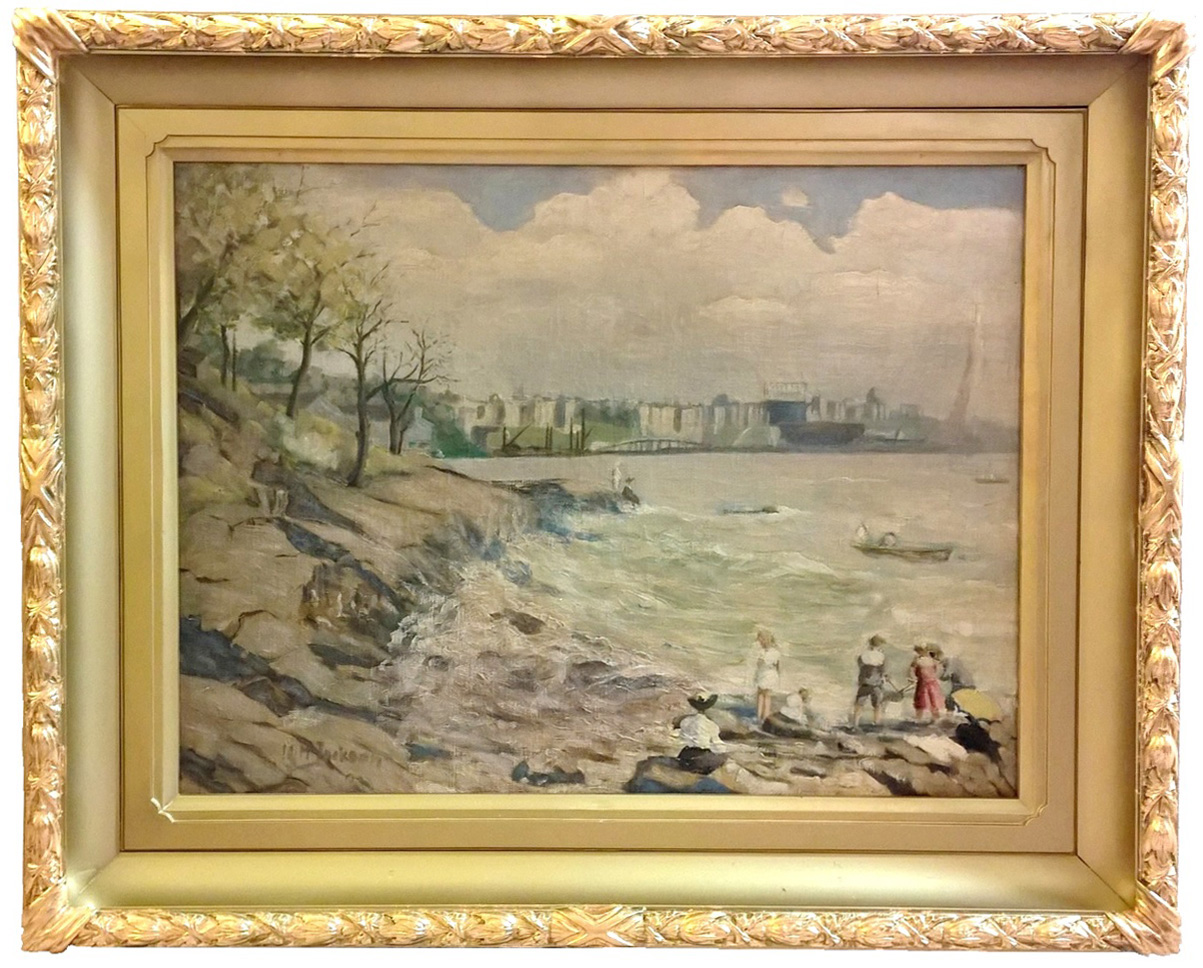
In December 2015 and January 2016 TGC successfully restored a worn and stained driftwood frame with matting. Liesner's 'San Francisco Marina' was acquired in poor shape - showing wear and tear due to years of improper storage conditions. The painting was cleaned and the frame completely restored using a special wood protecting layer. The stained matting was overpainted in titanium white.
TGC Workshop: Driftwood frame restoration

after


before

TGC Workshop: Stolen Painting
In April 2015 this unrestored painting was stolen from TGC. The artist Hans Josef Zimmer depicts a scene at a port with people enjoying a sunny day on the pier. The painting is in unrestored condition with yellowing varnish. As of December 2024 the painting remains missing.

In January 2016 one of the TGC projects involved the gilding of a carved Art Deco frame. As a first step the worn frame was colored in 18k gold basepaint. As a next step 23k gold leafing was applied to some of the corners and center ornaments. A final step completed the gilding of all remaining ornament features.
TGC Workshop: Gilding
after
before


A May 2016 reframing project was required for Rothwell's 'Abandoned House'. The original frame showed significant paint loss and did not complement the modernist painting at all. There was also significant bending to the board as it had stretched over the decades - a paint flaking disaster was prevented as it was 'released' from its frame. After careful cleaning a newer wood frame was found that protects and complements the painting much better.
TGC Workshop: Reframing the Rothwell painting 'Abandoned House'

TGC Workshop: Portrait Framing
before
after



When it comes to framing portraits, most of the usual rules apply that come to mind when framing any other kind of art. However, selecting a frame that complements the portrait and brings out the colors and plays off the lines or details of the painting can be a real challenge. How can the portrait stand out when hung next to others? Will the frame be too distracting so it takes away attention from the portrait?
In December 2015 TGC worked on two portraits that were acquired as rolled up canvas straight from the artist Sergio Enriquez. Other than the size the two portraits couldn't be any more different. The first portrait was framed with added protection into a plain aged wood frame with silver accents whereas the second painting was fitted into a solid wood frame with deep scoop styling and inner embossed leaf pattern. As a special consideration the frame on the second painting complements the one shown in the background of the painting itself.

TGC Workshop: Identifying the artist: Hans Rudolf Richter or Hermann Richter?
Both art databases askART, Artnet and Arcadja falsely link Hans Rudolf Richter portraits to Hermann Richter:
In some instances it may be tricky to determine a painting's creator. Looking at the signature first is never a guarantee or a good way to determine a painting's origin and artist. The process of identification starts with the overall 'look and feel' of a painting. Does the style and composition match what the artist is known for? Does the canvas and supplies used by the artist match the time frame of the artist's bio? An interesting example was an initial misidentification of Hans Rudolf Richter's series of portraits. Style and composition reminds the viewer of Hermann Richter, the German painter who moved to California in 1927 and who painted for the 1939 Expo in California as well as the 1935 genre murals at the West Coast's oldest German restaurant, Schroeder's on Front Street in San Francisco:



Properly identified Herman Richter painting 'The Card Sharks', ca 1932 in the TGC
Hermann Richter genre paintings at 'Schroeder's' restaurant in San Francisco


Hans Rudolf Richter genre paintings in the TGC, ca 1950
Suspicion about some of the portraits' true origin arose during a scheduled cleaning that involved removing the canvas for its frame. There is significant quality difference between art material used before, during and after World War II. Further research was conducted and finally - with the help of 'Kunstpalais Mosaikwelt' in Vienna, Austria, TGC was able to properly identify the artist as Austrian born Hans Rudolf Richter.
This example shows the importance of proper identification and labeling as well as provenance research.
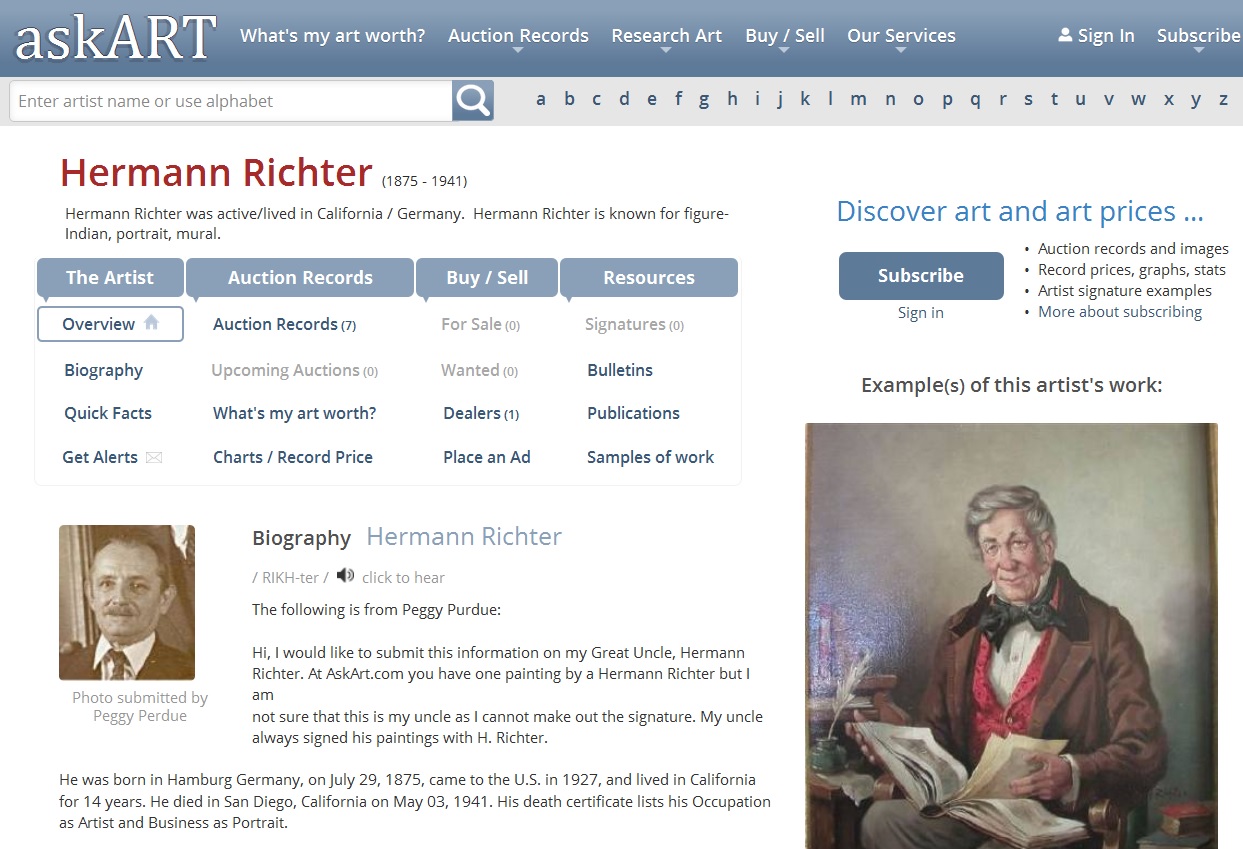
Another talented artist often falsely identified is Albert Richter, a mid-20th century artist from Frankfurt. He had no relation to either Hermann or Hans Rudolf Richter in style and subject. He is known for is very skillfully crafted alpine charcoal drawings. Albert's drawings are often falsely attributed to Hermann Richter or even the Karl-May-illustrator Albert Richter who lived nearly a century earlier in Dresden.
Albert Richter drawings in the TGC, ca 1950



Occasionally TGC preservation efforts include putting paintings under glass. In some cases the art is purchased with the glass in place - such as the Oscar de la Renta drawing. In some other instances special glass is applied to protect sensitive artwork from UV and other damage. Industry standard is True Vue® Museum Glass®
The manufacturer's website states: "When it comes to custom framing, this glass product is unmatched with its amazing clarity and uncompromised protection. And now it is better to handle with its easy-to-clean, more durable surface. Features: Virtually eliminates reflections, Blocks up to 99% of UV rays, Optimal light transmission brighten colors, Enhanced surface for better durability and easy cleaning, No ripple or “orange peel” effect on glass surface, Proprietary coatings are engineered for permanence, Premium 2.5mm thickness provides better strength and rigidity."
Tru Vue and Museum Glass are registered trademarks of Apogee Enterprises, Inc.

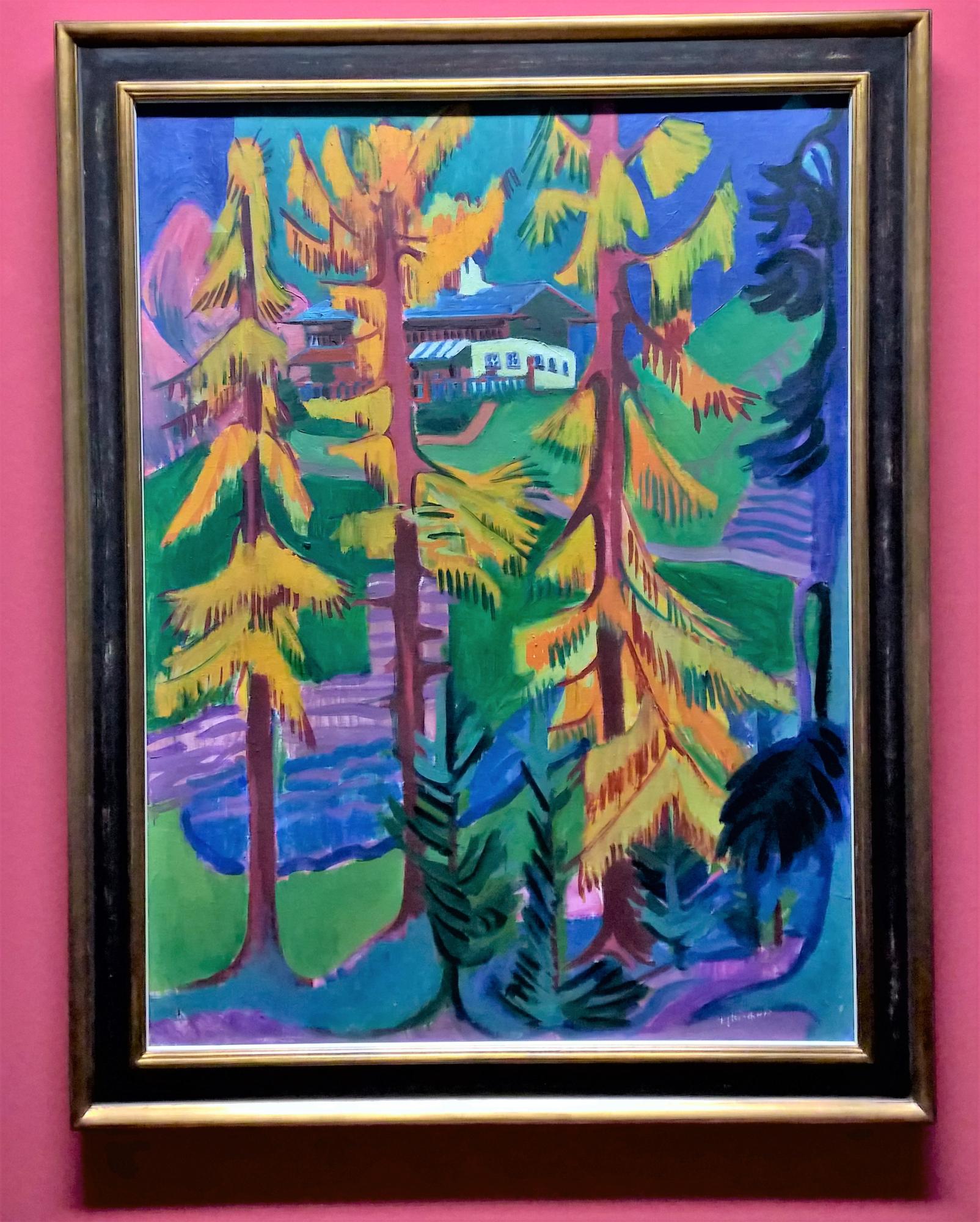
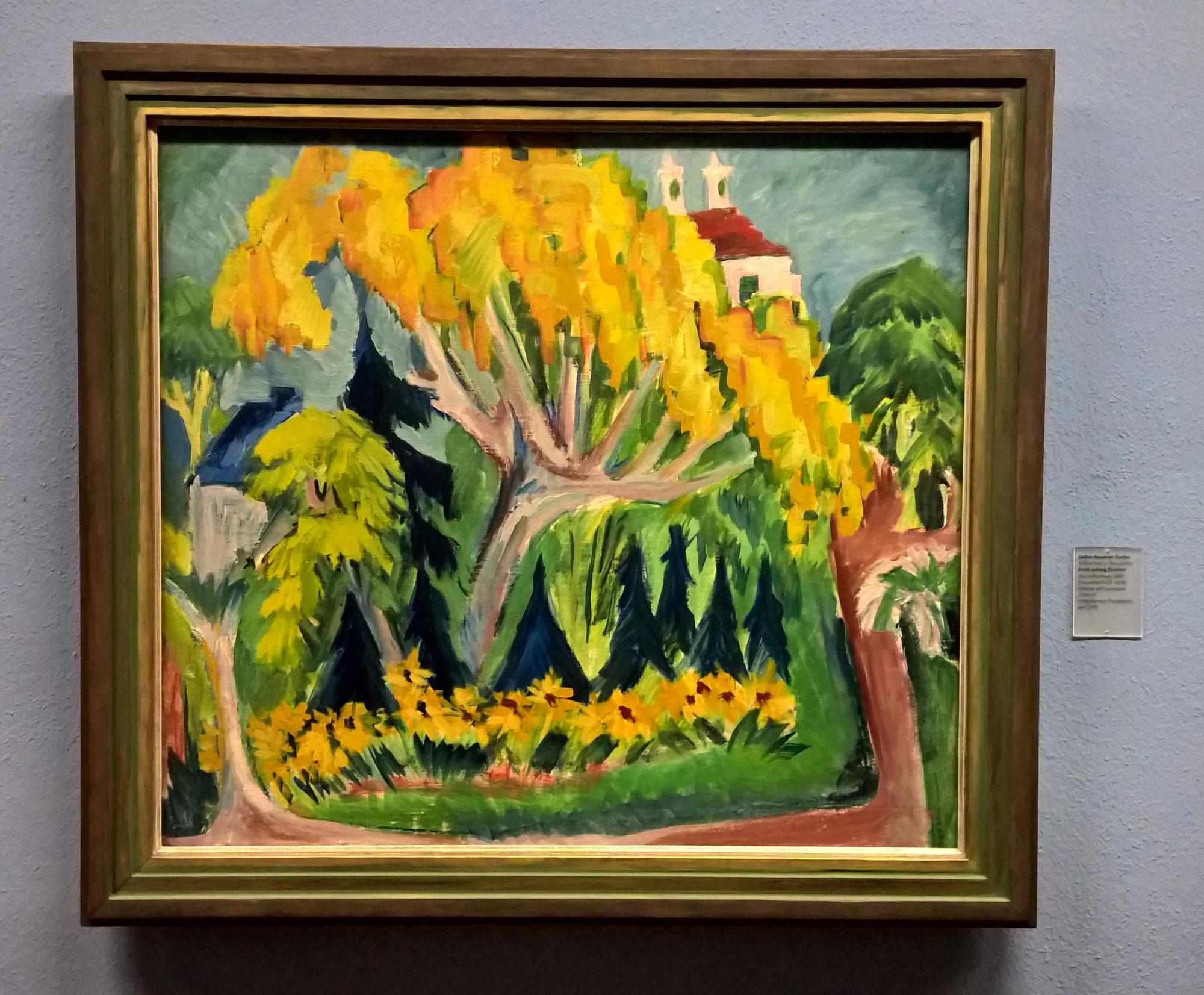
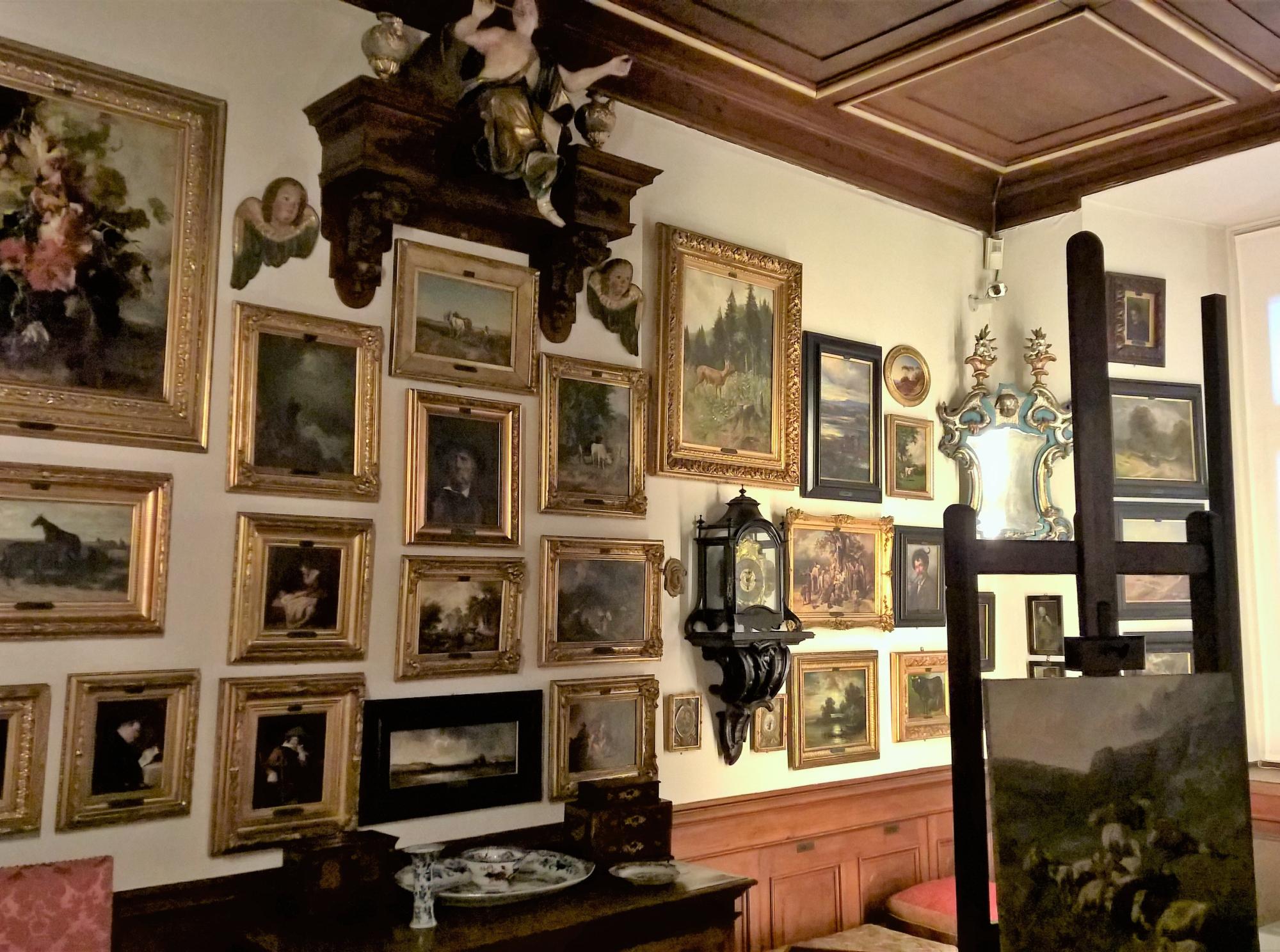


TGC Workshop: Paintings under glass: Tru Vue® Museum Glass®

TGC Workshop: Visiting the Braith-Mali-Museum in Biberach, Germany
The Braith-Mali-Museum is a museum with several sections in Biberach an der Riss in Upper Swabia. The museum resides in one of the oldest and biggest buildings from the 16th century in this city. It belongs to the considerable collections in Baden-Württemberg. On 2.800 square meters it presents archaeology, history, art and natural history. Models, all sorts of installations, also computer animations explain origin and settlement of the Upper Swabian landscape. Beyond it, the life and the terms of employment of the people are explained during the last centuries like the notable weaving in the town since the 17th century. The art-historical division gathers, beside key works of the Upper Swabian art creating, the important works of the German expressionist Ernst Ludwig Kirchner.
Reason for TGC to visit was to find more about Carl Ebert in the Historical artist's studios of the animal painters Anton Braith and Christian Mali from the 19th century. The studios are also host to the largest Carl Ebert collection outside Stuttgart's Staatsgalerie. The museum's curator, Dr. Uwe Degreif, explained in great detail the conditions the artists faced when painting en plein air in the 19th century. By 1906 the studios were moved in its complete state from Munich to Biberach and remain some of the most remarkable exhibits of 19th century art. During the private tour TGC received a lot of insight into the style, preservation and maintenance of Carl Ebert artwork.
Inside the completely original Historical artist's studios of the Munich painters Anton Braith (1836-1905) and Christian Mali (1832-1906) at the Braith-Mali Museum in Biberach - a unique cultural monument of the first order. The private tour gave insight into the working conditions and tools used by the two 19th century artists. The traditional parlours were transferred from Munich to Biberach in 1906.
Photos: TGC
Works of Ernst Ludwig Kirchner exhibited at (but not owned by) the Braith-Mali Museum in Biberach:
Photos: TGC


before
after
Breuninger's work was framed in equally poor material - but unlike the above Baumgartner painting TGC was able to restore the frame to its former glory. It matches the painting better and will complement the singing girl for many years to come.
A successful frame transformation is seen here. The 18k gold paint works well on smaller to mid-size gesso frames. An extra gilding step for the frame of the Hans Rudolf Richter portrait was added in 2019.






